Bathroom upgrades and renovations are always a bit tricky because you have to approach things with an eye on future remodels. No bathroom will stay the same forever, and there’s a good chance you’ll be back in there fixing it up again in ten years if you’re still in that house.
One of the main concerns people have with bathrooms is how to handle putting new tiles around toilets.
Should you tile around a toilet or under it?
Ideally, you always want to tile the floor before installing a toilet. Then, if you’re not replacing the toilet, remove it if you can and tile under it to avoid problems in the future.
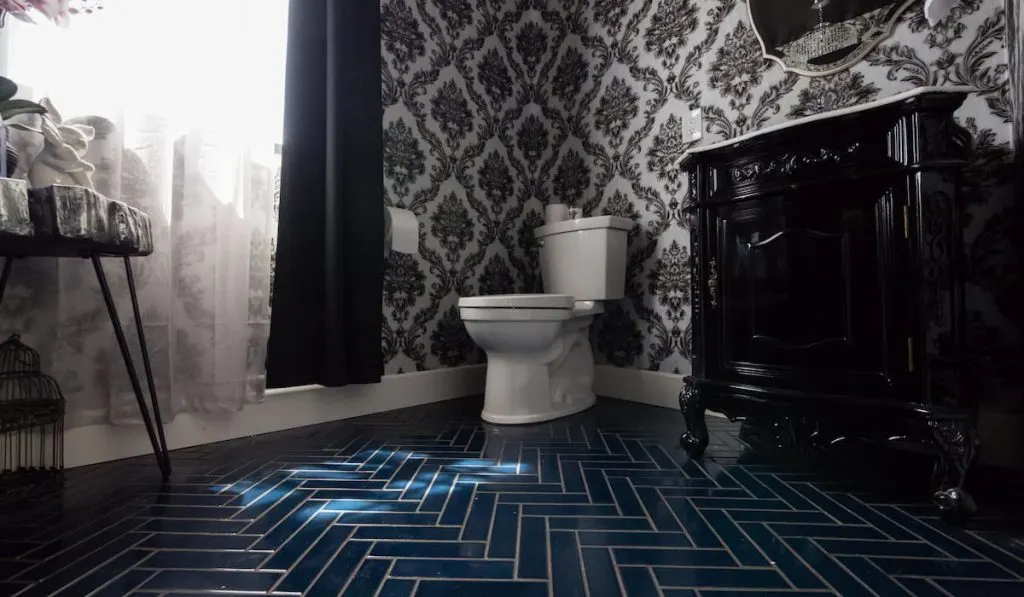
Fixed tiles around the toilet are often a temporary solution. When the time comes to replace your toilet, you could run into fitting issues that could cause leaks or require you to break up the tiles around the bathroom.
Either way, having smooth tiles underneath the toilet means you don’t have to cut the tiles in strange shapes to fit the rounded edges of your toilet’s base.
Whether installing new tile, replacing a toilet, or both, here are some tips on getting things right the first time so that you can save time, money, and a lot of headaches.
Different Toilet Options
Unfortunately, not all toilets are the same. They have different fits that will dictate how they’ll rest on your floor once they’re in.
Thankfully, though, most of them are the exact general fit. When they vary in size, it will affect whether a new toilet will fit over your old tile without gaps.
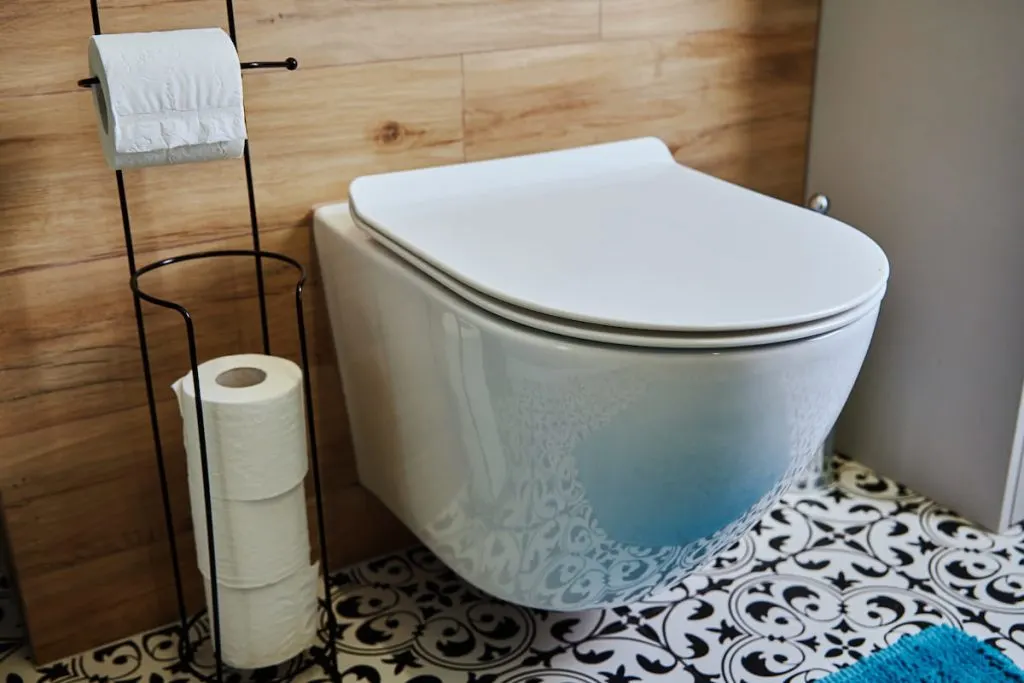
These days, homeowners have more choices regarding what type of toilet they want. There are:
- Back-to-wall toilets
- Wall hung toilets
- Close coupled toilets and more
Each will come with different sizing and spacing requirements, so it’s essential to know how the tiling or drain positioning relative to the wall will affect how much work you must do during installation.
Do You Tile Under the Toilet Flange?
You should tile under the toilet flange if possible. However, if you tile over the flange or too close to it, it may be impossible to switch toilets unless the new toilet is the exact dimensions of the older model you’re replacing.
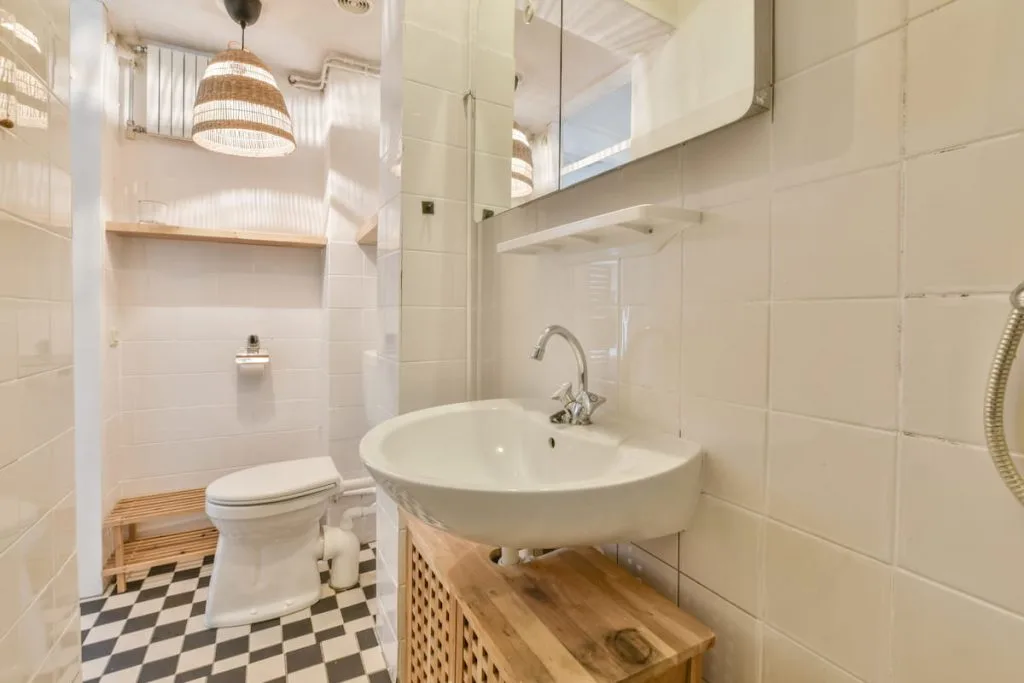
When you install tiles over the flange, you’re essentially making it a permanent bathroom fixture unless you want to break tiles and remove the flange.
That’s no problem if the tiles are small or entirely covered by your toilet. However, if the tiles extend out from under the toilet, you’re going to have to break them and replace all of the surrounding tiles.
Anyone who has tried to replace one or two tiles at a time knows how hard this is unless you have spares in the garage or somewhere in the basement.
Your local hardware store may not carry the same stock if your tiles are very old. You may have to look online, but it’s not a sure bet you’ll find what you need.
If you tile over the flange, you could have to retile your bathroom if you can’t find replacement tiles, and it’s impossible to live with that old toilet any longer.
Also, cutting tiles into awkward sizes around the flange is hard and will present future issues. So, the next time you install a toilet, it will present challenges unless the toilet base and area that goes into the flange are the exact sizes as your old toilet.
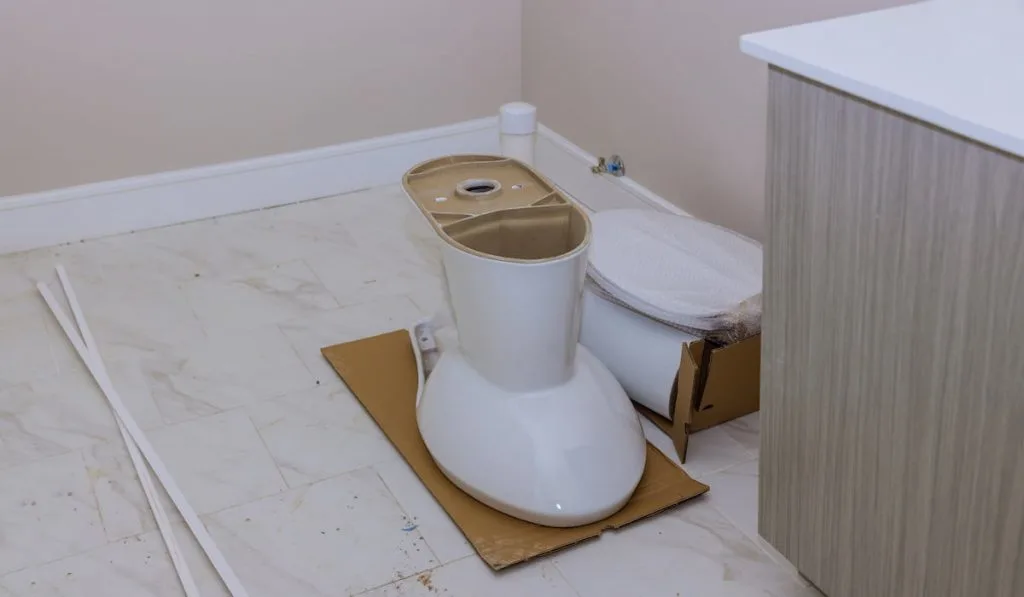
Remove the Toilet First
It is best to remove the toilet before you install any tiles, whether they are ceramic or vinyl tiles.
Cutting tiles to fit around the toilet is possible, but it’s generally ill-advised because you’re then stuck with the same style and size of a toilet. In addition, it restricts your future options for remodels.
Instead, remove the toilet and lay the tiles before refixing the toilet.
When you lay the tiles down, be careful where you put your mortar, so you don’t affect the area around the flange.
Mortar can make refitting the toilet very difficult once it dries. You could have difficulty getting a good seal on your toilet and spend hours trying to fix the issue.
Quickly wipe up any loose mortar and clean the area well before you put the toilet back in.
Caulking Around the Toilet Base
Applying caulk to the toilet base will seal the space between the toilet and the tile. This reduces water spread from under your toilet and onto the tile floors.
However, even when the toilet is installed perfectly, minuscule differences in leveling from the tile to the toilet base and flange can cause small leaks.
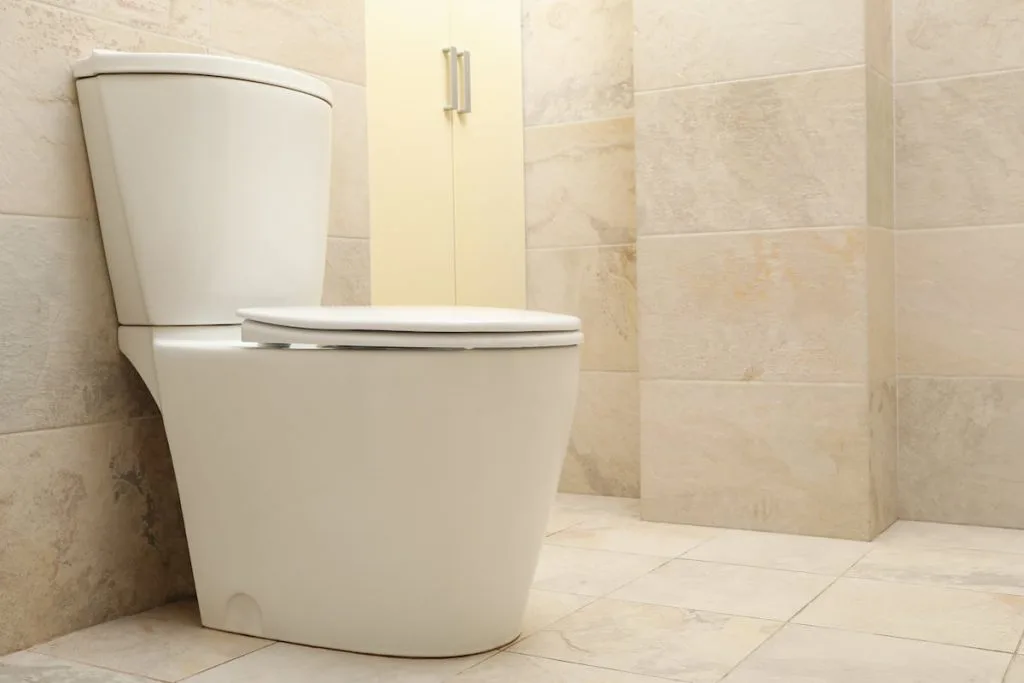
Thankfully, the water leaks will be very small if your toilet is on correctly. Any leaking water will stay inside the caulk seal and dry or feed into the flange before it causes any damage to your bathroom floors.
When buying caulk, you probably want to buy silicone caulk that becomes transparent when it cures. It’s a fantastic water-resistant option that will last for years. The next time you need to take off your toilet, all you need is a box cutter to cut through the caulk before your toilet can come off.
Toilet replacements are an easy DIY project. However, many homeowners encounter problems when removing the old toilet and find flanges partly under tiles, sloppy mortar, and other issues.
In some instances, it may be better to contact a licensed plumber to help with the installation unless you’re confident working with tile.
This is why tiling under the flange and the toilet are always recommended. If you’re tiling a new bathroom or remodeling, always remove the toilet before you start putting in the tiles.
Tile under the flange as well to prevent future leaks. The extra time of taking off the toilet will spare you the pain of having to chisel tiles when upgrading your toilet a few years later.

